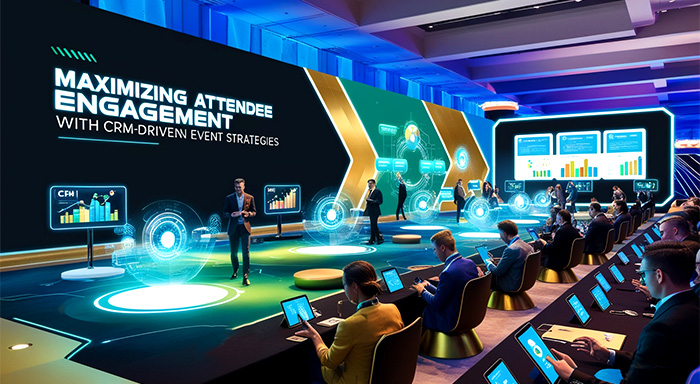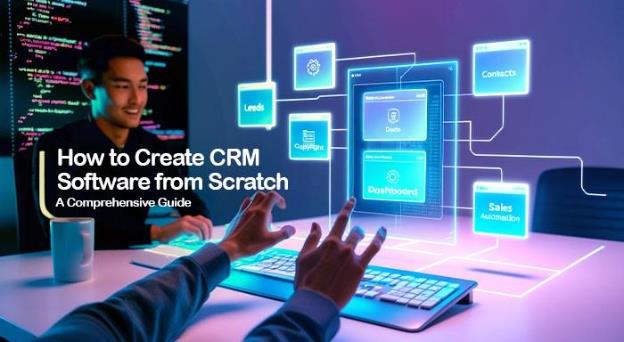Effective attendee engagement forms the base for any successful event. CRM systems avail their support by arranging attendee data and thereby helping event planners to design experiences. Knowledge of unique preferences of the individuals ensures personalized interaction with the audience. This further helps organizers connect with the audience’s interest on a deeper level. In this article, let us focus on CRM-driven methods for elevating engagement. We will also discuss a few software platforms that help businesses improve their event management. Whatever may be an event-whether conference or networking session-the application of these methods ensures a seamless, effective experience for guests.
Understanding CRM’s Role in Event Engagement
CRM systems are one of the bases for changing events planning and management to a focus on the attendee. The platform can work as a centralized storage place for quality data. It provides comprehensive features related to collecting and handling attendee data. Data includes details like interaction history, preferences, and feedback. These empower event marketers and organizers to create lasting experiences that meet the expectations and requirements of the attendees.
One major role a CRM plays is in making communication easy and smooth. Be it personalized invites, event updates, or even thank-you notes after the event, a CRM surely makes each attendee feel special. Moreover, CRMs help in making the registration process straightforward by allowing easy integration with event platforms. It also helps in attendance monitoring to streamline the check in process.
The events are therefore updated in real time, with CRM tools supporting interactions that help organizers respond to attendee inquiries and concerns quickly. After the event, this platform also allows systems to collect feedback to help you in post-event analysis. This helps in better assessment of engagement rates and session participations to refine strategies and make them better for the audience.
Software to Complement CRM-Driven Event Strategies
While CRM systems provide an excellent backbone for managing attendee engagement, their full potential is achieved when complemented by other software. These tools operate in concert with CRM platforms, dealing out event-related tasks with ease and creating a very interactive experience for your attendees. Collaborating with additional software helps event planners to get the best results out of their workflow by providing better communication and real-time updates. This will put event planners in a much better position to get better outcomes and higher satisfaction among attendees.
Types of Software to Use Alongside CRM Systems:
- Event Management Tools - Simplify event registration, ticket purchasing, and scheduling; keep track of attendees' participation. It ensures that important factors, like session assignments and the number of attendees per session, are organized to reduce mistakes. In this regard, event planners have the opportunity to monitor no-shows or latecomers to make informed decisions for future events.
- Communication Platforms - Enable personalized messaging, updates, and reminders throughout the lifecycle of the event. CRM systems aid organizers in maintaining timely and regular flow of communication. Timely flow of communication is quite crucial for informing the attendees and keeping their engagement levels high. Vital features like segmentation and automation enable planners to craft messages that connect with the audience groups on a deeper level.
- People Management Solutions - people management solutions monitor and coordinate attendee check-ins, seating arrangements, and access permissions. Real-time data related to attendee movements equip event organisers to avoid bottlenecks and ensure seamless crowd flow. This makes the event much more organized and improves the overall experience of the attendees. Event organizers can achieve this by utilizing the attendee management software, which streamlines the processes such as monitoring departures and arrivals or handling access to specific areas in the event.
- Engagement Applications - Encourage interaction through features such as live polling, Q&A sessions, and networking. Engagement applications also allow attendees to connect with one another and build a community during event breaks or specific sessions.In using interactive moments, planners can create moments the attendees will associate with the event.
Designing Engagement Strategies with CRM Data
CRM systems can unlock reams of information with which to design an engagement strategy precisely for the needs of attendees. Using a unified platform, event planners can easily collect data like preferences, footfalls, behaviors, and profile. Gathering insights from such data enables them to generate experiences that resonate with their requirements and create a lasting impression on them. This makes audience segmentation and efficient communication delivery quite easy, which in turn drives participation and satisfaction. Automated workflows enable planners to sustain regular communications for a considerable amount of time. This can make attendees feel catered for at all crucial touchpoints of the event.
Step-by-Step Designing Engagement Strategies with CRM Data:
- Collect and Analyze Data - View the profiles of attendees, their details of registration, and feedback of previous events in your CRM.
- Segment Your Audience - Group attendees based on similar interests, profession, or other engagement levels.
- Plan for Personalized Communication - Send customized emails or messages to each segment concerning the interest and needs that affect them.
- Create Interactive Experiences - Use CRM insights to build breakout sessions, networking events, Q&A Panels, or other activities that align with attendee preferences.
- Automate Workflow Processes - Schedule reminders, updates, and follow-ups to ensure consistent communication throughout the event lifecycle.
- Monitor and Adjust in Real Time - Use real-time data coming in from your CRM to make necessary adjustments, such as reallocation of resources or modification of session availability.
- Evaluate and Optimize Post-Event - Analyze key engagement metrics and feedback from attendees to refine strategies for future events.
Monitoring Success and Ensuring Improvements for Future

After the event, it is a crucial task to measure its success and identify aspects that need improvement. Leveraging unique features of the CRM systems, it becomes easier for the planners to analyze quality data and get powerful insights for much-improved decision making in the future. They can analyze details like session scoring based on attendee’s feedback, engagement level, participation, etc. Such information helps planners in recognizing the strength of the events and finding areas that did not work well and need to be adjusted.
Key performance indicators would be attendance, session engagement level, and survey responses from the audience after the event. Conducting in-depth analysis of these KPIs and using predictive analytics can help organizers detect future trends in these events. More significantly, CRM reports offer clues about the preferences of attendees so that better and more relevant experiences can be crafted. Key insights lead to regular improvement that generally empower organizers to ensure that the future events will be superior to the past events.
Conclusion
A successful event is driven by attendee engagement and leaves a mark. CRM systems come to the front in learning the needs of attendees and create experiences for them. These, along with the right tools and paying attention to the data-driven approaches, give planners the ability to conduct events both smoothly and with great meaning. By ensuring regular progress in their organization methods, organizers can stay relevant. Moreover, they can improve their reputation, form beneficial partnerships, and sustain their success over the long-term.



